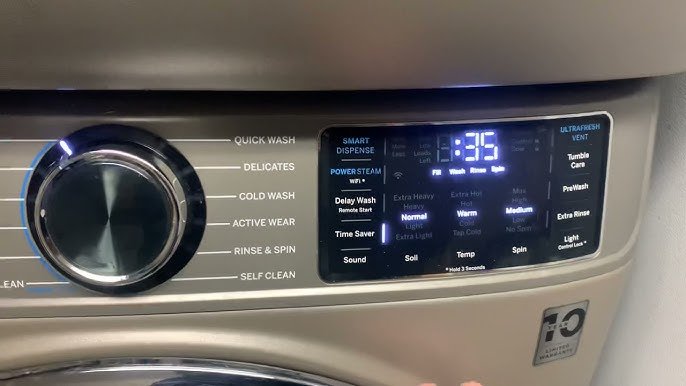
First things first, error codes are your dryer’s way of telling you something is wrong. Think of it like the check engine light in your car. It’s designed to alert you about a specific issue that needs attention. The F2 code is typically related to a problem with the dryer’s temperature sensor or thermistor, which helps regulate how hot the dryer gets. If this sensor is acting up, it can’t properly control the temperature, potentially leading to overheating or inefficient drying cycles. Ignoring it might not only lead to poorly dried clothes but could also cause bigger issues down the road.
Understanding the F2 Error Code on GE Dryers
The F2 error code isn’t just a random string of letters and numbers. It’s a specific message from your GE dryer that points to a potential malfunction in the temperature sensing system. Imagine it like a traffic light: green means go, and F2 means — oops, something’s off! This error is chiefly associated with the thermistor, a small but crucial component that monitors the temperature inside your dryer.
The thermistor, in simple terms, is like your dryer’s thermostat. It has a big job to do—making sure your clothes don’t come out baked or, alternatively, still drenched. When the thermistor isn’t working properly, it can misread the temperature, leading to the machine either getting too hot or not hot enough. No one wants their favorite t-shirt to turn into toddler-sized attire because of a rogue sensor.
So, why should you care? Well, not addressing an F2 error can lead to incomplete drying cycles. You might notice your clothes are either still damp or way too hot, which not only impacts the condition of your clothing but can also hike up your energy bills, as the dryer works harder and longer than it should. If left unchecked, it might even lead to permanent damage, requiring costly repairs.
How to Respond to the F2 Code
Alright, so your dryer says F2. What do you do now? It’s not time to press the snooze button on this alert just yet. First, ensure you unplug your dryer to prevent any electrical hazards. Safety first, right? Now, you’re going to want to inspect the thermistor. This involves removing the panel and checking for visible signs of damage, like a loose wire or a part that looks like it’s seen better days.
If you’re not comfortable poking around your appliance or aren’t certain what to look for, it might be time to call in the cavalry—a professional technician. They can test the thermistor’s resistance (basically how well it’s doing its job) and replace it if necessary. Think of them like the superheroes of home appliances, swooping in to save the day.
Once you’ve got that F2 issue sorted, don’t just pat yourself on the back and call it a day. Run a test cycle with a few towels to ensure everything’s back to normal. Plus, this gives you peace of mind that your dryer isn’t going to cause another wardrobe-destroying disaster anytime soon.
Preventing Future Error Codes
Now that you’ve tackled the F2 error, let’s talk about keeping your dryer in tip-top shape. It’s much like car maintenance—a little regular care goes a long way. Start by cleaning out the lint trap after each use. Not only does this prevent lint buildup, which can affect drying efficiency and potentially cause fires, but it also ensures proper airflow.
Every few months, make it a habit to check the vent hose that leads to the outside of your home. It can become clogged with lint over time, much like arteries with cholesterol. Keep it clear to ensure your dryer runs efficiently. Lastly, if your dryer’s showing signs of age or frequent errors, consider scheduling a regular maintenance check with a professional.
Here’s the deal—your dryer is an investment in your home’s ease and efficiency. By paying attention to error codes like F2 and addressing them promptly, you’re extending its life and ensuring it runs smoothly. Now, go tackle that pile of laundry with confidence, knowing you’ve got one less appliance worry on your plate!